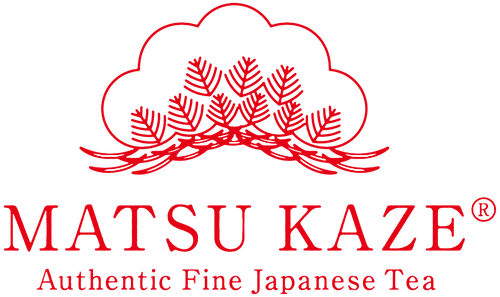Black Tea
Black tea has a stronger flavour and darker colour than green tea. Black tea leaves have undergone considerable processing, including auto-oxidation. There is no vitamin C in black tea.
Fresh leaves are first “withered” by being dried in direct sunlight or by unheated air that is pumped through a layer of leaves. The leaves are then rolled to break up the cell surfaces to promote oxidization, which produces the dark colour and aroma. This process chemically alters the polyphenols originally present in the tea, decreasing their antioxidant power. Finally, the leaves are heated in iron pans and dried several times to prevent further oxidization.
Nearly 66% of all tea produced and consumed worldwide is black tea (International Tea Committee Annual Bulletin of Statistics, 2006).
Oolong Tea
Oolong tea takes the middle road between green and black tea. The method for processing it is the newest and was not developed until the mid-nineteenth century.
The tea leaves are “withered” in the sun and also indoors to reduce their moisture content. The leaves are then heated in an iron pan to prevent further oxidation. Oolong tea is partially auto-oxidized, so it is slightly stronger in taste than green tea but more delicate than the fully auto-oxidized black tea. Oolong tea has more nutrients, including vitamin C, than black tea, but less than green tea. Less than 2% of tea consumed worldwide is oolong tea.
White Tea
White tea is made from the youngest leaves and buds, which are lightly steamed and then dried. White tea, like green tea, contains very little caffeine and very high levels of antioxidants – even slightly higher than those in green tea. Once brewed, white tea is very pale in colour. It is also rare.
Green Tea
Green tea is generally a subtle shade of light green or yellow. The green colour comes primarily from the chlorophyll that is extracted from the leaves by hot water.
After the leaves are picked, they are lightly steamed or gently heated to prevent oxidation, which preserves important natural antioxidants. Rolling and drying effectively seals in the nutritional components of the leaf and does not destroy the vitamin C.
Green tea comprises 28% of the tea produced and consumed worldwide.
Japanese Green Tea
There are about 20 different kinds of Japanese green tea. Some of the most popular are:
Sencha: Japan’s most popular tea, is generally distinguished by a delicate sweetness and a mild astringency. There are many varieties of sencha and it even has its own sencha ceremony. It is an extremely flexible tea and it is possible to manipulate aroma and flavour by changing steeping conditions such as temperature and steeping time.
Shincha: Full of flavour and nutrients, this very special seasonal sencha tea is made from the first spring leaves of the year; and the best are usually hand picked. A rich, fresh aroma and full-bodied sweet grassy flavour with a long lasting finish. Shincha leaves are sweeter than other sencha teas. The added sweetness is due to high levels of theanine. Perfect for iced tea, shincha produces a nice refreshing fruity flavour.
Fukamushicha (Fukamushi Sencha) – This tea is processed the same as sencha, except that the leaves are steamed two or three times longer. The colour is darker than regular sencha, although the taste remains sweet and the fragrance is richer and deeper. This tea is ideal for delicate stomachs.
Kukicha: This tea consists of stems and stalks that are normally discarded in the production of sencha, gyokuro, and matcha teas. It has a clean taste and light fragrance.
Konacha: This is the tea that was often served free at sushi restaurants in Japan. It consists of the rejected buds and tea “dust” left over from the processing of sencha and gyokuro. Konacha is reasonably priced and has a strong colour, flavour, and aroma, making it an ideal cooking ingredient.
Bancha: This tea is made from the new shoots and leaf buds that grow after the first picking. They are picked in June, August and October, with the leaves becoming tougher with each subsequent picking. Bancha mayalso include the upper stems and some larger leaves discarded during the process of sencha production. This tea is more astringent and less fragrant than sencha, making it a good tea to sip after a heavy meal. It contains more catechins and fluoride than other teas and so is effective against tooth decay and halitosis. It is a relatively low caffeine tea.
Matcha: This is powdered tea that is used in the tea ceremony. In its unpowdered form, it is called “tencha”. Top grade matcha is a bright shade of green. In general, lighter green varieties are sweeter and darker ones more astringent. When the new shoots on the tea bush have two or three leaves, they are shaded from sunlight for two or three weeks. They are dried after being steamed, but are not rolled, producing tencha. During the drying process all the veins and stems are removed and the leaves are then stone ground into fine powder. Matcha completely dissolves in water and is entirely consumed, providing more nutrients than other types of green tea. Matcha is also a popular ingredient in food, including desserts.
Gyokuro: This limited production top grade tea owes its sweetness and its strong umami flavour to high levels of theanine, an amino acid generated by covering the tea bushes with a reed screen two or three weeks prior to picking. The screen shields the leaves from sunlight and produces leaves that are dark green when dried. In this sense, it is similar to tencha, but it is also rolled and it contains veins and stems. Gyokuro contains a lot of caffeine (stimulates the brain and nervous system) and chlorophyll (stimulates tissue growth, resulting in healthy skin).
Houjicha (same as “hojicha”): This tea is produced by roasting bancha or sencha over a high heat, resulting in brownish leaves imbued with a savoury fragrance. The liquor is brown in colour and the tea has a roasted aroma and a nutty, earthy, sometimes smoky flavour.
Houjicha contains relatively little caffeine and tannin, and is used in hospitals in Japan because it does not interfere with most medications and is drunk by children, those with illness, sensitive stomachs or low tolerance for caffeine. It also promotes good circulation.
Houjicha is great hot in winter and also served cold in the summer. It makes a great evening tea.
Genmaicha: To make this tea, traditionally bancha or medium grade is used, though some teas use high quality sencha or even gyokuro tea leaves. The tea is combined with roasted and popped brown rice, which adds a slightly nutty taste. Sometimes matcha is added for sweetness and colour. The mild flavour of genmaicha makes it a good tea to drink after a meal that includes oily or deep-fried foods, such as tempura, or after some Chinese dishes.
Other Japanese Tea
Japanese black tea or “Wakocha” has been produced in Japan since the early 1900s. It has a sweet, mild taste and almost no astringency, unlike most black teas. They have a floral and honey aroma. As their flavour isn’t as bold as other black teas, they are not usually consumed with milk. Some creative farmers have smoked these teas or added ingredients such as organic ginger to produce unique flavours.
Japanese oolong tea is quite rare and is usually made from Japanese black tea cultivars. The organic oolong tea that we offer from Takeo farms is even more unique in that it is made from green tea cultivars.
Mastu Kaze offers some very limited Japanese pu-erh fermented tea that is made from koji-kin spores, which is used in the production of sake, miso and soy sauce.

